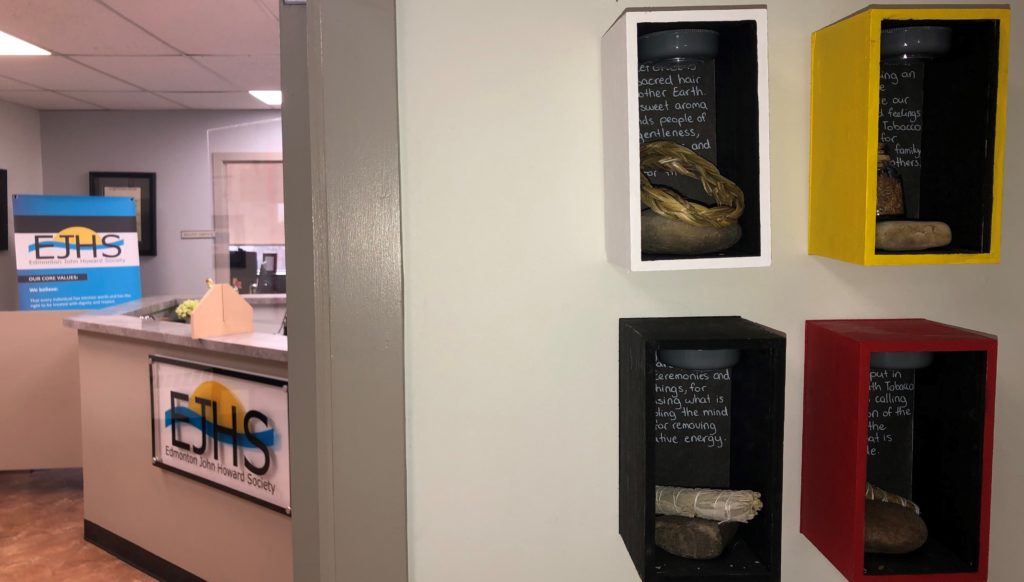Medicine Boxes
The Edmonton John Howard Society is raising awareness of Indigenous Culture by displaying medicine boxes filled with four medicines—tobacco, cedar, sage and sweetgrass—and a description of each of their uses. The idea behind the display was to hang them in high transited areas to bring awareness of the medicines and intended to teach both staff and clients.
There are a total of 44 display boxes—11 sets—for all of EJHS’ agency programs. We connected with Alejandro Montano, Manager of The Loft at Edmonton John Howard Society (EJHS) to learn more about the boxes.

What inspired the creation of these displays?
EJHS’ internal Truth & Reconciliation Committee is always coming up with ways in which we can highlight, bring awareness off, and honour Indigenous Culture throughout our different programs. Having said that, the four Medicines in Indigenous Culture are something very important that the committee thought would be appropriate to bring attention to from staff and residents.
What is the Truth and Reconciliation Committee? When was it formed and why?
EJHS’ internal Truth and Reconciliation Committee was formed in 2019, for the purpose of bringing awareness to Indigenous matters that relate to our agency’s clients and staff. The committee is formed by staff members that work in different EJHS programs. The committee is constantly brainstorming ways in which our agency can be more inclusive and adaptive to the many challenges that Indigenous populations face on a daily basis. Additionally, another purpose of the committee is to evaluate how we can bring change throughout EJHS’ programs, to not only create a positive impact with our clients and staff, but also throughout the rest of the community as a whole. The committee is guided by the TRC Calls to Actions, working to ensure EJHS’s mission, values, and 50 year Business Plan align with the Calls to Action.
What is the significance of this display?
The Four Sacred Medicines (Sage, Tobacco, Sweetgrass, Cedar) are displayed in each individual box, matching the corresponding colors of the Medicine Wheel. The inside of the box has a description that highlights the intention/use of each particular medicine according to Indigenous wisdom. EJHS thought it was important to highlight these as they are a big part of Indigenous Culture so that those of us of non-Indigenous heritage can learn and support clients and co-workers better.

What has the reaction been so far with both clients and staff?
Both clients and staff throughout the agency’s many programs seem to have received the displays well. It seems that both staff and clients alike are learning more about Indigenous Culture.
Any success stories to share?
Our contracted Indigenous Mentor, that came on with EJHS after these Medicine Boxes went up, has stated she is thrilled to have these visible to all clients and staff.
Several clients that identify as Indigenous have mentioned that it is great to see the programs highlighting the Medicines as they play an integral role in their culture.
Community partners that visit EJHS programs such as Alberta Health Services have stated that the Medicine Boxes are a great idea and that other agencies throughout the city should be creating similar things for their programs.